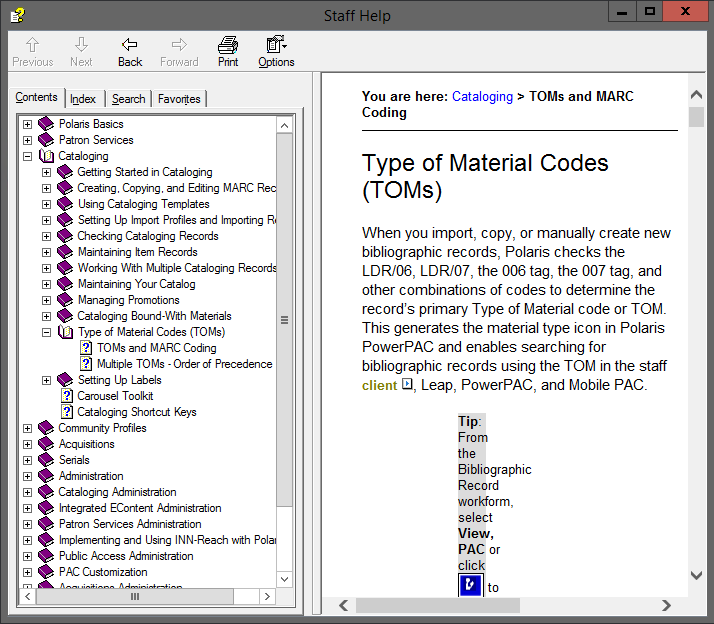Guidelines for Use of TOMs
Patrons are able to tailor their search results in the public catalog by using a Type of Material facet. The Type of Material or TOM is determined by a combination of fields in the MARC record.
Not all TOMs that are possible should necessarily be used. It is better to be more specific with the TOM than to be general so that patrons are better able to find what they are looking for. For example, the TOM of “Music CD” is more specific than “Musical Sound Recording.”
Many records do have the correct TOM when they are imported from OCLC such as most books. However, there are some records that are not correct. For example, sometimes books get coded as manuscripts when they are not manuscripts. Audiobooks are often coded differently than the Polaris codes. Older bibliographic records in particular may lack 006 and 007 fields.
Catalogers need to check the TOM chart provided by Polaris to make sure their record has the correct LDR/06; LDR/07; 006; 007; and 008 fields for the particular format they are cataloging. Not all TOMs require all of these fields.
To find the Polaris TOM chart, open the staff client and click on Help, Polaris Topics. In the “Contents” tab, open the folder for Cataloging and then open the folder for Type of Material Codes (TOMs). There are two tables there. Choose the one labelled: “Type of Material Codes” The “Type of Material Codes” is the one to refer to when cataloging. At the bottom of this document is the Order of Precedence. This section can help in explaining how the TOMs work in the public catalog.
TIP: Once you have opened a document in Help you can save it in the Favorites tab. It may also be useful to print out the TOM chart so you can refer to it while cataloging.
